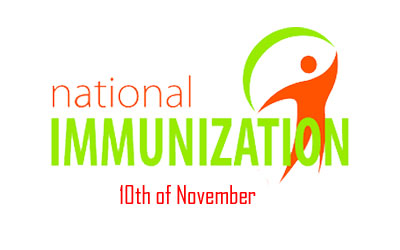 Ranchi, Jharkhand | November | 10, 2016 :: National Immunization Day is celebrated on 10 November every year. This brief throws light on issues, actions and way forward in achieving full immunization in the state.
Ranchi, Jharkhand | November | 10, 2016 :: National Immunization Day is celebrated on 10 November every year. This brief throws light on issues, actions and way forward in achieving full immunization in the state.
Issues
- Immunization coverage has improved in Jharkhand from 8% in 2000 (NFHS3) to 64.9 % RSOC 2013 but differential achievements between districts, rural & urban areas, and socioeconomic groups is still a matter of concern
- Full Immunization (FI) ranges from 43% Giridih to 88% in Lohardaga
- 11 out of 24 districts have FI lower than state average(AHS 12-13)
- Full Immunization is 56% in scheduled caste and 59% in scheduled tribe population as compared to 77% for other social categories (RSOC 13)
- 14% tribal children never received vaccine as compared to 6% in other category(RSOC 13)
- Full Immunization is 47% in lowest wealth quintile as compare to 76% in highest (CES2009)
- Immunization averts 2 to 3 million deaths annually; however, an additional 1.5 million deaths could be avoided if global vaccination coverage improves. Today, an estimated 18.7 million infants – nearly 1 in 5 children – worldwide are still missing routine immunizations for preventable diseases.
- In 2012, the World Health Assembly endorsed the Global Vaccine Action Plan (GVAP), a commitment to ensure that no one misses out on vital immunizations
Actions:
- UNICEF has been supporting state in achieving the desired coverage in 17 districts through demand generation by partnering with local NGOs/CSOs and system strengthening activities by supportive supervision mechanism
- In 2015, Government launched Mission Indradhanush in quest to immunize left out children which are estimated around 2, 80,000. During first phase of Mission Indradhanush 79687 additional sessions were held apart from routine sessions
- 3 new cold chain points were added to deliver the vaccines on time in hard to reach areas like Saranda forest
- 647 cluster meeting were held in 2015 and 2016 at sub center level for better microplanning of the sessions.
- 400 folk shows and audio-visual activities were conducted in areas with low Immunization coverage
- The progress is actively tracked supportive supervisors deployed by government and UNICEF
Follow up/Way forward
- A strong focus of the immunization programme in Santhal Pargana region and poor performing districts can drive the immunization coverage up.
- Programmatic focus in every district to immunize often missed children in scheduled caste and tribal population, population with poor wealth quintiles (Below poverty line), rural and urban poor areas, and children of illiterate mothers.
- There are multiple factors and barriers lies with community which are contributing for not getting the benefits for their mothers and children.Engaging underserved/marginalised groups to develop locally tailored strategies. Utilising community structures to enhance communication and deliver services. Involving civil society organisations in community outreach and planning can contribute to behavioural change in these communities which can improve the immunization coverage.
- Although reaching the needy may appear costly, difficult to implement and time consuming, the benefits of concentrating on them outweigh the cost of reaching them.
Dr. Madhulika Jonathan, Chief of UNICEF Jharkhand says “Immunisation is the right of every child. Full immunisation against eight vaccine preventable diseases can reduce infant mortality. UNICEF will focus on reaching children in hard to reach areas to ensure immunisation for every child.”

